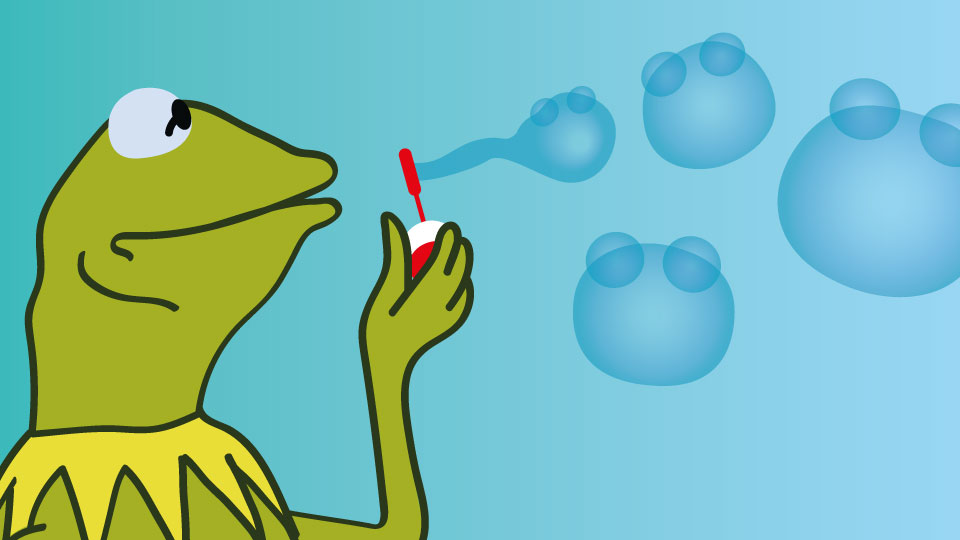“Seriously – why are you letting this spoil our post-breakfast rosé?” I sighed to the chairman of the insignificantly-sized investment company Kermitted Asset Management as we met up for our annual strategic offsite in southern France. (I trust it goes without saying we were adhering to all local anti-virus measures – right down to the masks dangling jauntily off our wrists.)
“Because these rotters are in danger of spoiling all my splendid ESG plans,” huffed the chairman. “For a better, more beautiful world?” I smiled. “Good one,” grunted the chairman. “No – for a better, more beautiful share of assets under management. Obviously.” “But we’re talking about a couple of advisers here,” I protested. “Actually, I believe we are talking about 4% of advisers,” said the chairman. “That’s not to be sniffed at.”
“I’d be wary of doing any sniffing these days,” I replied. “But let’s just check your figures. When the good, good people of Rathbones undertook their recent research into how mainstream ESG investing has become in today’s adviser world, they had the neat idea of canvassing 50 advisers with 20% or less of client assets in ESG investments and 50 advisers with 60% or more.
“And while nine in 10 of the latter sample reckon their investment allocation to ESG strategies will have increased three years from now and 10% expect it to be the same, 94% of those dubbed the ‘Non-ESG Advisers’ think their allocation will have risen, 2% think it will be the same and 4% appear to be firmly of the opinion it will have dropped.
“Now, while I would be genuinely interested to hear the thinking behind the views of that final group – always assuming they were not messing with the Ratbo’s researchers, of course – seeing as they are 4% out of 50, that comes out at a whole two advisers. Hence my original question – why are you letting this spoil our post-breakfast rosé?”
“For one thing, Mr Statto, we have no way of knowing over just how many clients or how much in the way of assets the malign influence of those two advisers spreads,” the chairman replied. “And for another, it only takes a few bad apples to taint the whole barrel.” “You don’t have to tell me,” I conceded. “I’ve been following your various businesses for the last 25 years.
“Even so, I honestly don’t think you have anything to worry about. If ever the wonderful world of investment had reached a tipping point, it is now and with ESG – as I believe 94% of ‘Non-ESG Advisers’ also told the Rathbones researchers. Which means your original vision of markets awash with uncritical cash that floats all boats of a greeny hue for years to come remains unaffected.
“And should our two ESG contrarians prove to be right in the future – or, as it’s also known in investing, ‘wrong now’ – so what? Surely I don’t need to recall your favourite quote from Q? How he’d always tried to teach James Bond two things?” “First, never let them see you bleed,” intoned the chairman reverently. “Second, always have an escape plan.”
“Precisely,” I nodded. “So I’d rather thought, once you’d thoroughly rinsed your ESG scheme …” “‘Allied our clients’ interests with the demand for societal, business and ethical change’,” the chairman instinctively corrected me. “… then you would move onto your next venture,” I finished up. “Ah yes … quite so,” the chairman nodded. “And just remind me what I’m planning that will be?”
“I assumed you’d be targeting the inconvenient truth of value investing,” I shrugged. “I’ve come across plenty of professional investors prepared to accept that, sooner or later, as with any broad consensus play, ESG stocks will head into bubble territory. I have come across precisely zero professional investors prepared publicly to take that to its logical conclusion.
“Which is that proper value players will eventually have to start going out and buying all those naughty companies that have been marked down for their lack of ESG credentials – and you seem to be just the right person to take the lead here. “… lack of ESG credentials,” muttered the chairman, scribbling in a notebook. “Well … one thing at a time, eh?”











